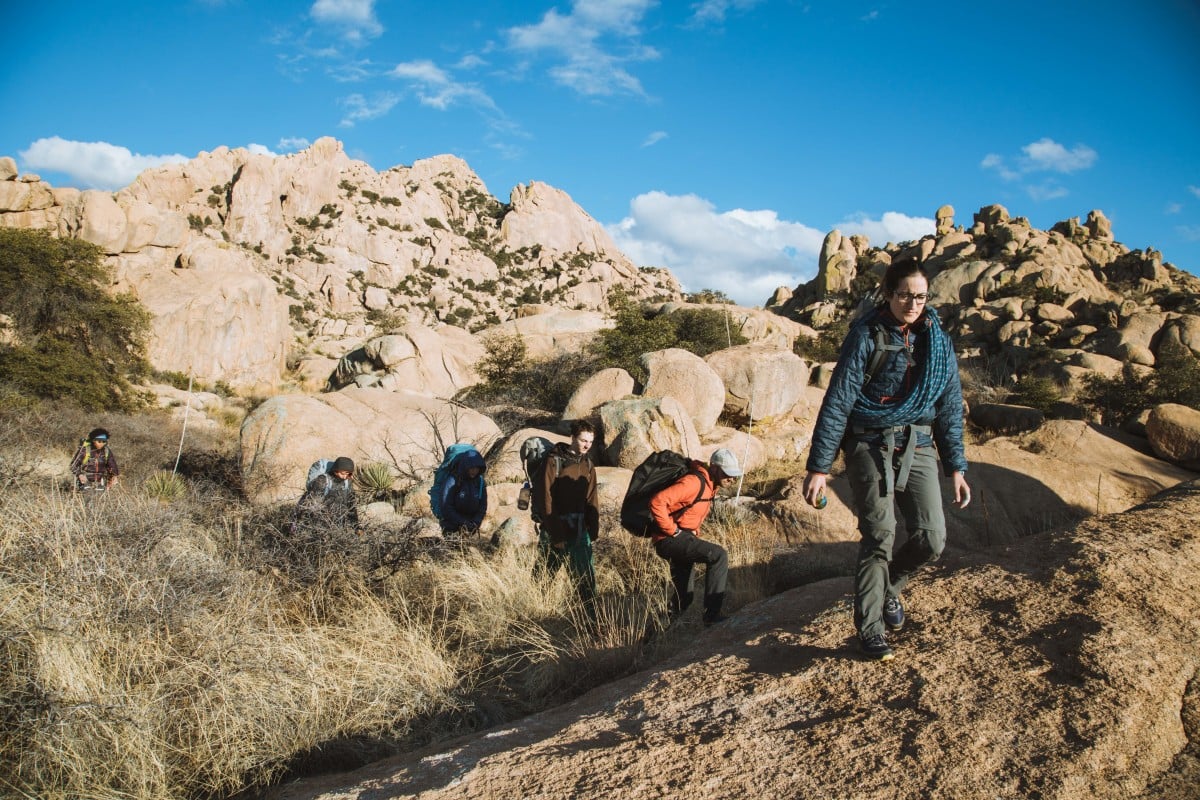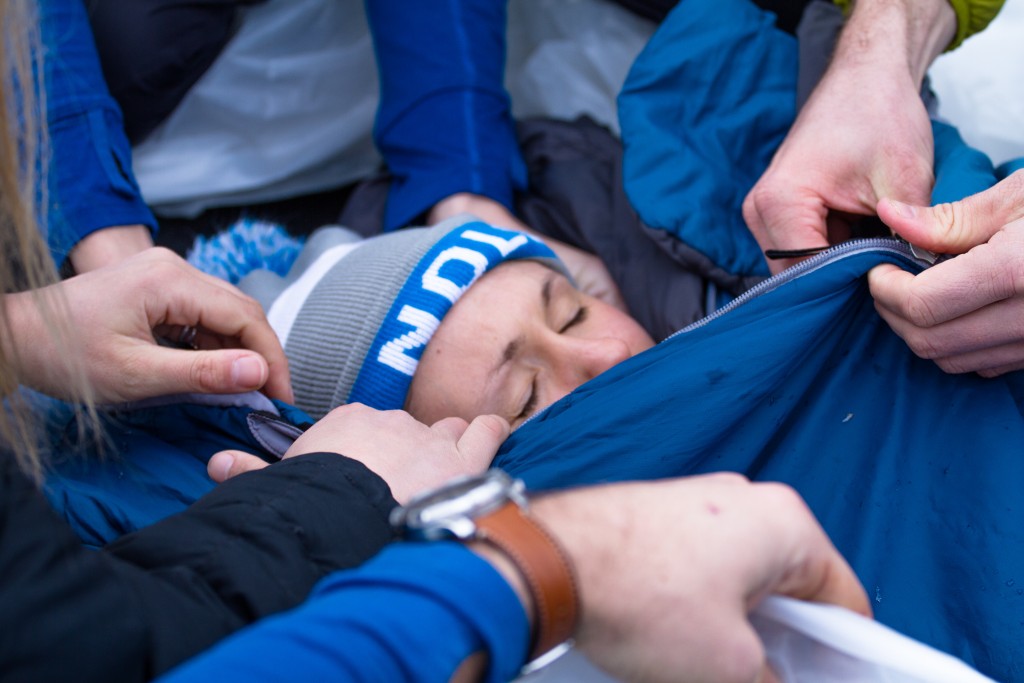.jpg?width=1137&name=Kirk_Rasmussen_COVID-9710%20(1).jpg)
When we travel into the backcountry with someone who has diabetes, it’s important to be aware of the signs and symptoms of hypoglycemia and hyperglycemia, know how to provide treatment, and understand when we should evacuate someone. We should also be familiar with some prevention steps to protect people’s health while in the wilderness.
About Diabetes
Diabetes is a complex disease of sugar metabolism. It typically manifests itself as too much sugar (hyperglycemia) or too little sugar (hypoglycemia). Normally, our blood sugar is able to regulate itself and stay within a range of 80-120 mg/dl (4.0-7.0 mmol/L).
When someone has diabetes, their body has a more challenging time keeping their blood sugar in that range. This is because their pancreatic cells have a hard time secreting insulin, or because their body’s cells fail to use insulin properly. Folks with diabetes may manage their condition by using synthetic insulin, other drugs, and/or by making changes to their diet and lifestyle.
According to the American Diabetes Association, over 34 million Americans have diabetes and 1.5 million people are typically diagnosed with diabetes every year.
Prevention
Let’s start with prevention. If you’re about to head into the backcountry with someone who has diabetes, it’s a great idea to sit down and have a conversation with them about how they manage their condition. Learn how you can assist them, what they look like when they’re struggling, and what medication and supplies they’re carrying. Ask about their sick day plan, as people with diabetes may have a more challenging time regulating their blood sugar when they’re sick.
Depending on your activity and where you’re recreating, this person should be comfortable managing their diabetes during times of heavy exercise or temperature extremes.
While you’re recreating, you should ensure that your hiking buddy stays well hydrated and fed. For longer expeditions, it’s also a great idea to have them carry twice as much medication and supplies as might be needed and to store the supplies in two different locations.
How to Recognize Hypoglycemia and Hyperglycemia

Hyperglycemia
Hyperglycemia is caused by too much sugar and not enough insulin in the body. Without insulin, sugar collects in the blood, and the body becomes dehydrated as it tries to excrete the excess sugar. This process tends to happen gradually.
We can look out for the following signs and symptoms:
- An altered level of responsiveness
- A weak, rapid heart rate, increased respiratory rate, and warm and dry skin.
- Increased hunger, increased thirst, and increased urine output
- Fatigue
- Breath odors that are sweet or acetone
- Persistent high blood sugar levels (greater than 120 mg/dl or 7mmol/L)
Treatment
If someone is showing signs of hyperglycemia, we should do the following:
- Perform a full patient assessment and check the patient’s blood sugar with a glucometer.
- If we can’t distinguish between hypoglycemia and hyperglycemia (perhaps we don’t have a glucometer, the batteries have died or it’s broken), we should give the patient sugar and encourage them to hydrate.
- As a wilderness responder, do not administer insulin to the patient. The person with diabetes may adjust their insulin dose and self administer their medication.
Hypoglycemia
Hypoglycemia is a complication of diabetes caused when the person with insulin-dependent diabetes takes too much insulin or fails to eat sufficient sugar to match their insulin level. This causes their blood sugar to drop and can impact normal brain function. Hypoglycemia can happen quickly and needs immediate treatment.
Some signs and symptoms of hypoglycemia are:
- Change in level of responsiveness such as feeling weak, disoriented, irritable, or not quite themselves. This can progress into an obvious mental status change, unresponsiveness or seizures.
- The patient may have a rapid heart rate, normal or shallow respirations, and pale, cool and clammy skin. There are usually no changes or a slight elevation in blood pressure.
- If we are able to check the patient’s blood sugar, it is less than 80 mg/dl or 4mmol/L.
Treatment
If someone is showing signs of hypoglycemia, we should do the following:
- Perform a full patient assessment and check the patient’s blood sugar with a glucometer.
- If we can’t distinguish between hypoglycemia and hyperglycemia, we should give the patient sugar.
- Give sugar until the responsive patient regains an adequate level of responsiveness. If the patient is unresponsive, place the patient on their side and rub sugar into their gums with a gloved finger. Make sure to protect the patient’s airway.
- Once the patient responds to sugar, give them a hearty snack or meal until their blood sugar level stabilizes.
Evacuation Criteria
When in the backcountry, it can be challenging to decide if someone is having trouble managing their diabetes or if they’re having a diabetic emergency.
>Here are some guidelines to help your decision making process:
- Folks with diabetes who have occasional and manageable hypoglycemia or hyperglycemia can stay in the backcountry.
- We should rapidly evacuate any patient with hyperglycemia that can't be managed, especially if the person has been sick, is dehydrated, or has persistent diarrhea and/or vomiting.
- We should rapidly evacuate any person with hypoglycemia that doesn’t respond to treatment.
Takeaways
Lots and lots of folks with diabetes recreate in the backcountry without any challenges. Before recreating in the backcountry with someone who has diabetes, ask them to educate you about it!
To empower yourself to provide first aid on your next trip, look into taking a NOLS Wilderness Medicine course: Find an upcoming course near you.
Written By
Robin Larson
Robin is the Education Director at NOLS Wilderness Medicine. She has been working as a NOLS wilderness medicine and expedition instructor since 2008.



